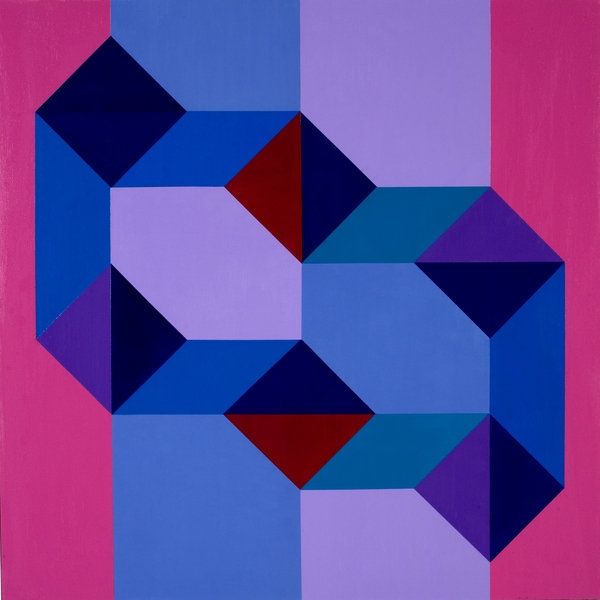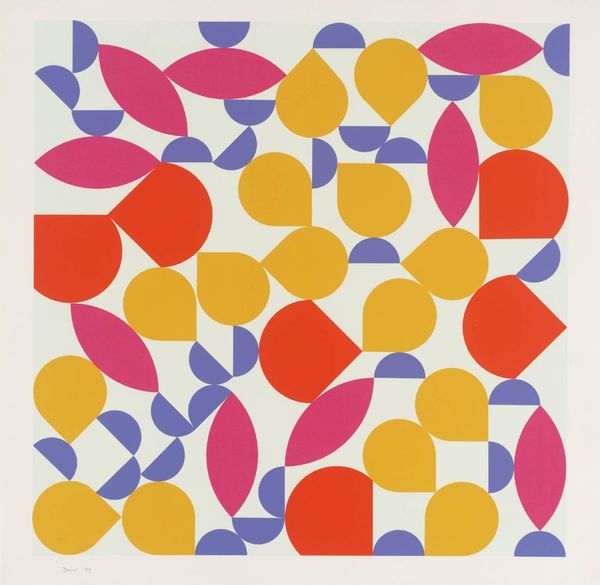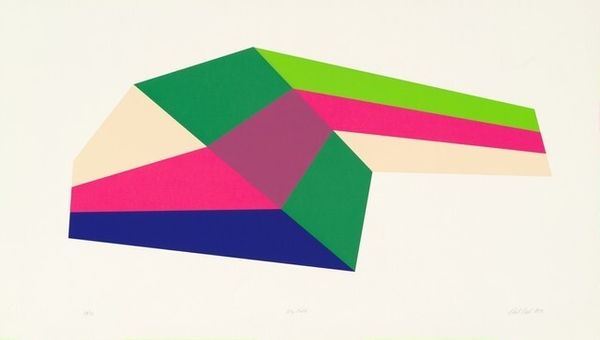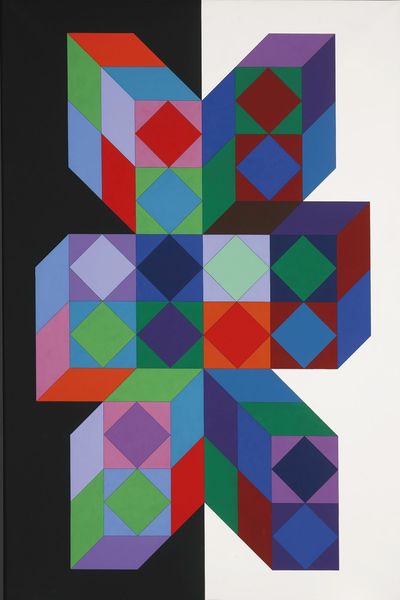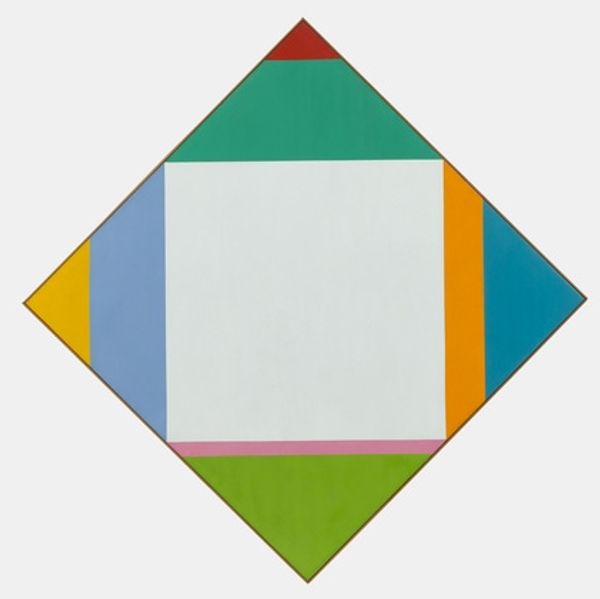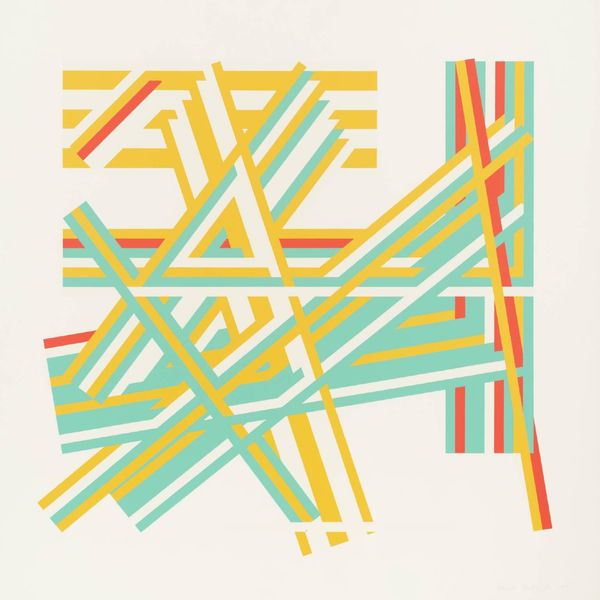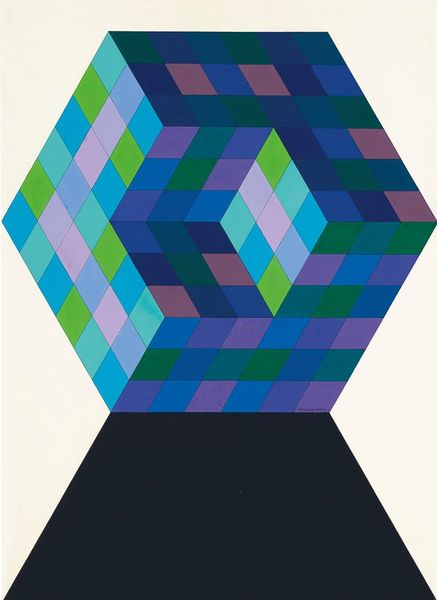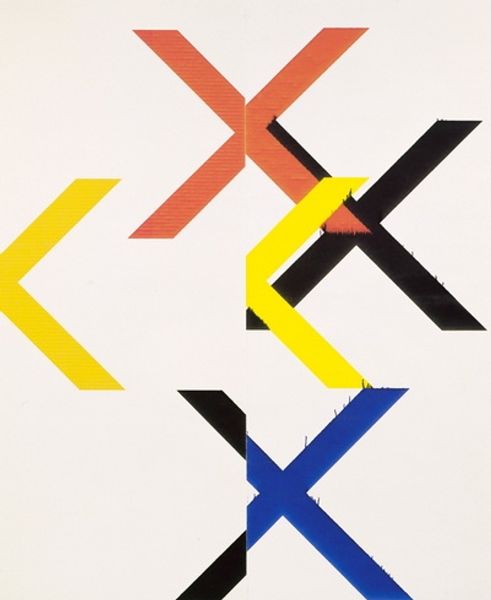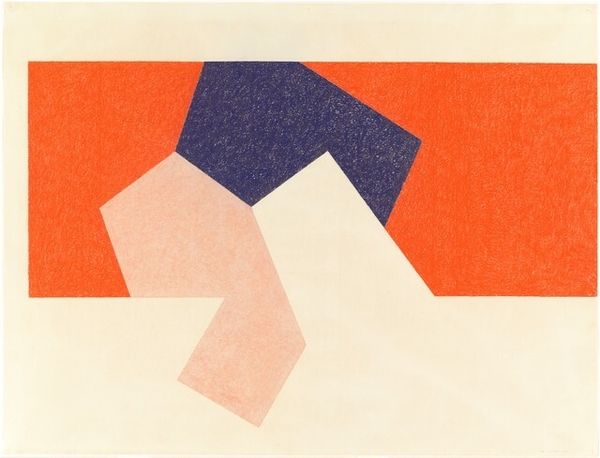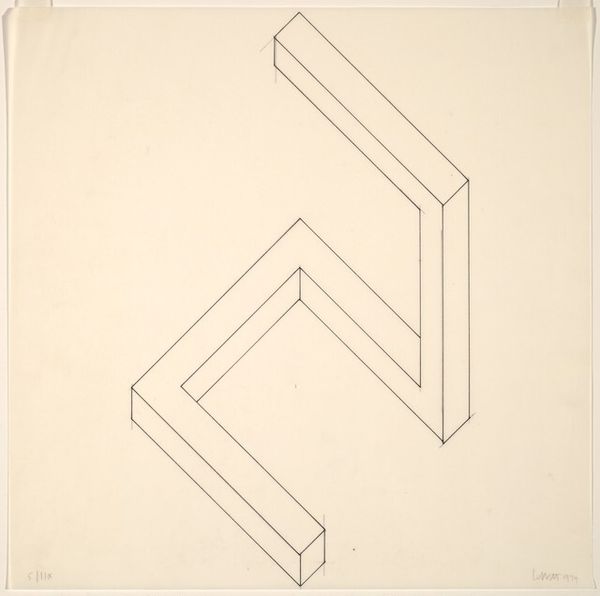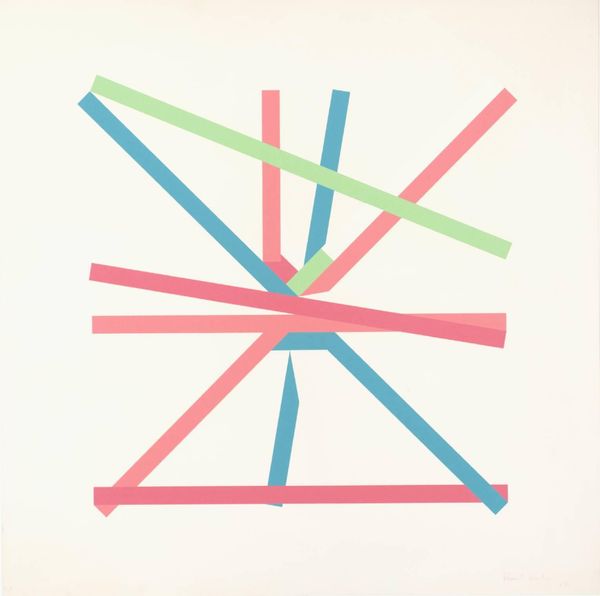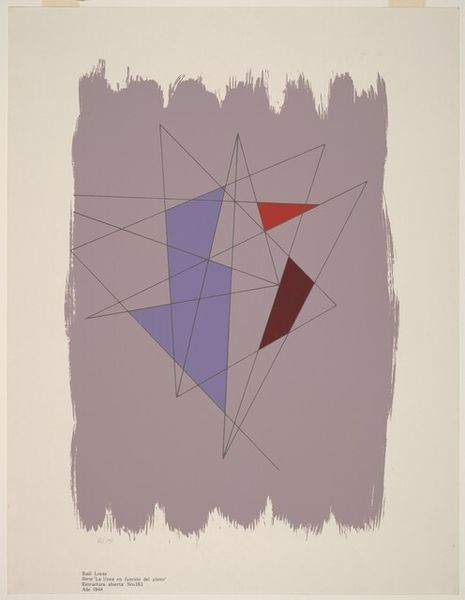
#
op-art
# print
#
op art
#
pop art
#
colour-field-painting
#
geometric
#
abstraction
#
pop-art
#
hard-edge-painting
Dimensions: image (irregular): 32.39 × 44.45 cm (12 3/4 × 17 1/2 in.) sheet: 55.88 × 71.12 cm (22 × 28 in.)
Copyright: National Gallery of Art: CC0 1.0
Curator: Here we have "Barcelona," a 1969 print by Paul Reed. It is a bold geometric abstraction. Editor: My first thought is how clean the edges are, the pure shapes give it a real visual pop! It is visually arresting in the way it plays with dimension. Curator: The work is strongly influenced by movements such as Op Art, Pop Art, and Color Field painting which were all hugely interested in color theory and surface effects. The "hard edge" quality is worth noting too – so deliberate! Editor: Absolutely. It’s fascinating to think about the process involved in achieving such precision, particularly the labour necessary in this pre-digital age. We need to consider this in the context of mass production and consumption happening around the time. Was Reed commenting on this culture? Curator: That's a rich idea. I think about its relationship to Color Field specifically - where you get large scale abstraction. With this work we see an abandonment of overtly representational painting. There's no attempt to create illusionistic space here, but to instead to call attention to its constructed-ness. Editor: Yet it feels strangely hopeful. The shapes lock and interlock and I'm trying to work out how to interpret that interplay. Curator: Well, the title "Barcelona" certainly suggests a specific geographic location, yet what aspects of the city are reflected in the abstraction? It avoids explicit political statements that Pop Art was occasionally known for, choosing an aesthetic vocabulary that has broad visual appeal. The work emphasizes visual perception itself. Editor: Perhaps that interplay of shape and colour provides space for an open interpretation: how does the art meet its viewers? What social function is being proposed here? Curator: It definitely requires us to slow down and consider our own role in bringing meaning to the artwork, as viewers, but also as consumers. Editor: "Barcelona" encourages us to confront how constructed realities shape us. Curator: Precisely – a compelling point, as the artist directs our attention not only to the flat surface but to social spaces too.
Comments
No comments
Be the first to comment and join the conversation on the ultimate creative platform.
